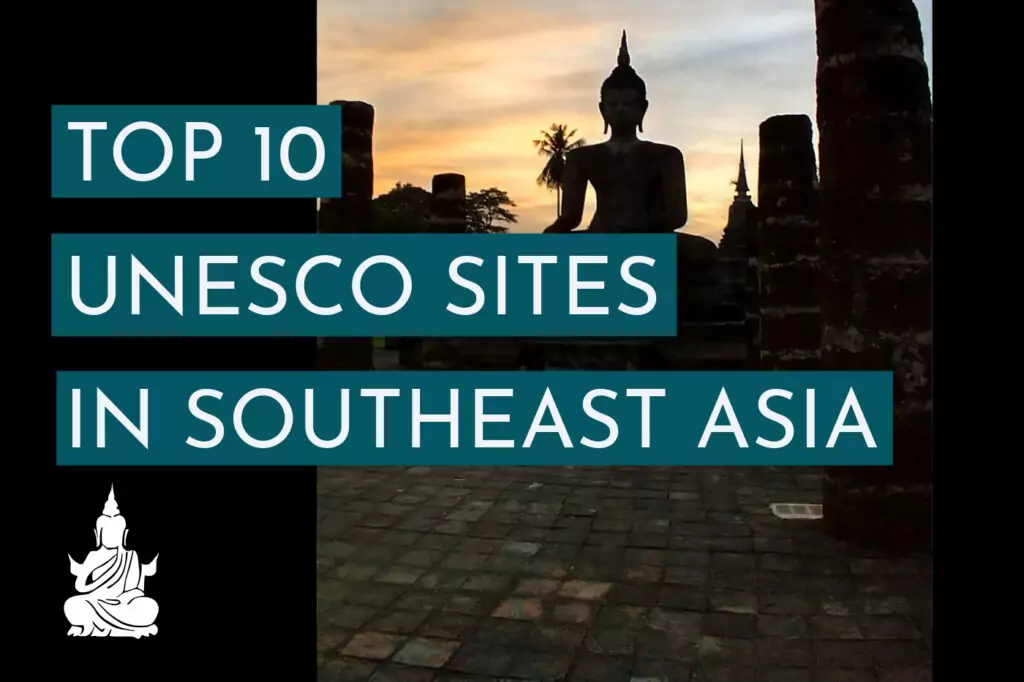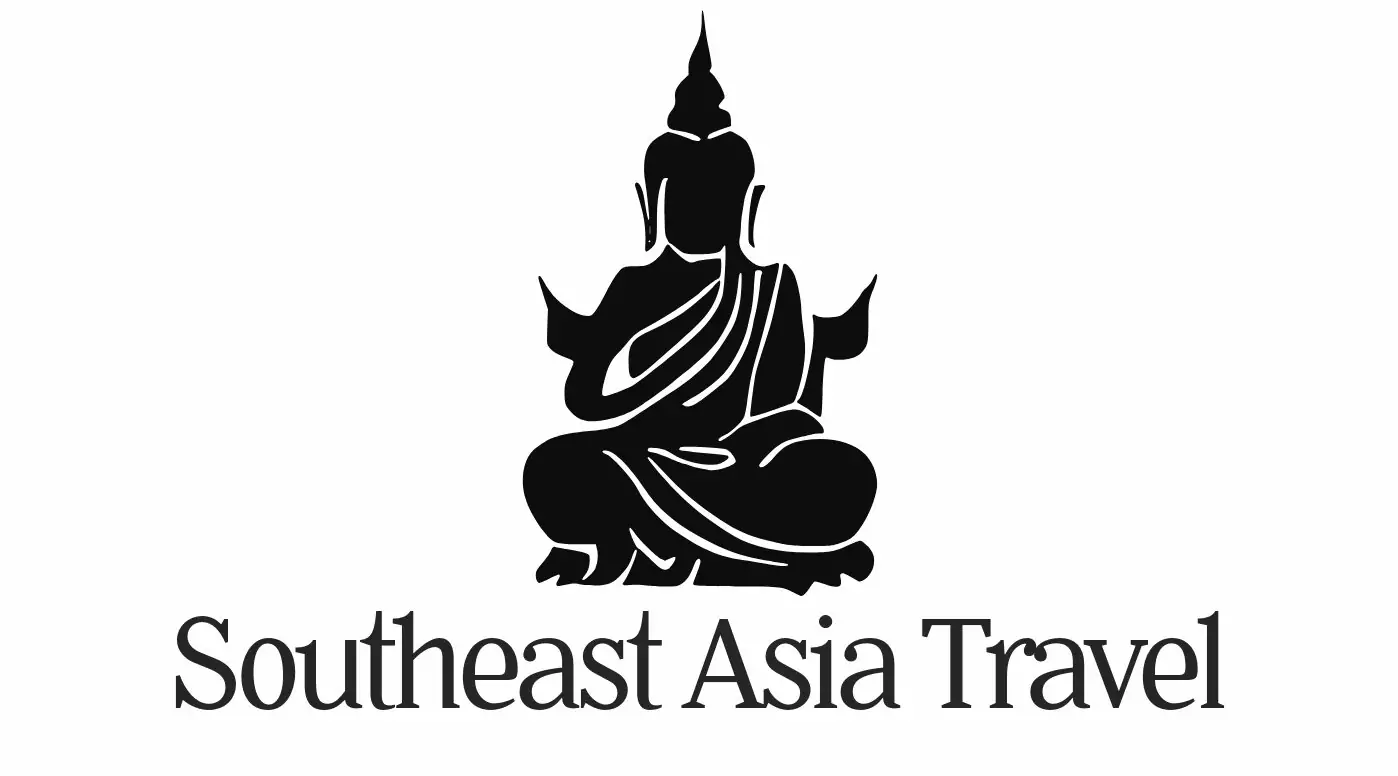Southeast Asia is incredibly rich in UNESCO listed places, so many that I can’t possibly go into detail about all 47, so in this post we’ll go into the main ones, the most interesting ones, and the popular sites that tourists visit. Of the 11 countries in Southeast Asia, only Brunei and Timor-Leste do not have World Heritage Sites listed by UNESCO.

UNESCO Sites in Southeast Asia To Visit
UNESCO sites may be natural, or cultural. In Southeast Asia there are In Southeast Asia, there are 32 cultural, 14 natural and 1 mixed sites. This number does change, destinations are added to the list often, and sometimes removed.
How many have the team at southeastasiafamilytravel.com visited? A dissapointing 14. In part because, we didn’t know of these 47 UNESCO sites before we visited these countries. We’ll do our best to see more.
Top 10 UNESCO Sites to Travel in Southeast Asia
If I had to pick a top 10 UNESCO sites to visit, based on our experience and how easy they are to travel to, it would be as follows. We have travelled to all of these UNESCO sites in Southeast Asia as a family with kids, and had no real difficulties. For more details on visiting and travel to these places, follow the links.
- Angkor – Cambodia
- Sukhothai – Thailand
- Ayutthaya – Thailand
- Hoi An Vietnam
- The Hue Monuments – Vietnam
- My Son Sanctuary – Vietnam
- Phong Nha Ke Ban National Park – Vietnam
- Luang Prabang – Laos
- Melaka and George Town – Malaysia
- Bali Cultural Landscape
How many have you visited? Tell us in the comments
UNESCO SITES IN THAILAND
- Ban Chiang Archaeological Site in Udon Thani
- The Historic City of Ayutthaya
- The Historic City of Sukhothai
- Kaeng Krachan Forest Complex
- Phu Phrabat, Stone Heritage in Udon Thani
- Ancient Town of Sei Tep
- Thungyai Huai Kha Khaeng Wildlife Sanctuaries (near Kanchanaburi)
UNESCO SITES IN VIETNAM
- The Central Sector of the Imperial Citadel of Thang Long in Hanoi
- The Citadel of the Ho Dynasty
- The Complex of Hue Monuments
- Ha Long Bay, Cat Ba Archipelago, off the coast near Hanoi
- Hoi An Ancient Town
- My Son Sanctuary. (Near Hoi An)
- Phong Na Ke Ban National Park (The biggest known caves in the world are here, Central Vietnam.)
- Trang An Landscape Complex, Ninh Bin
UNESCO SITES IN CAMBODIA
- Angkor
- Koh Ker Archaelogical Site of Ancient Lingapura
- Temple of Preah Vihear
- Temple Zone of Sambor Prei Kuk
UNESCO SITES IN LAOS
- The Plain of Jars
- The Town of Luang Prabang
- Vat Phou and Ancient Settlements, Champasak Cultural Landscape
UNESCO SITES IN MALAYSIA
- The Archaelogical Heritage of The Lenggon Valley
- Gunung Mulu National Park in Sarawak, Borneo
- Kinabalu Park, Sabah, Borneo
- Melaka and George Town on the Straights of Malacca
- The Archaelogical Heritage of Niah National Park Cave Complex, Sarawak
UNESCO SITES IN SINGAPORE
- Singapore Botanic Gardens
UNESCO SITES IN MYANMAR
- Bagan
- Pyu Ancient Cities
UNESCO SITES IN INDONESIA
- Borobudur Temple and Compounds
- The Cultural Landscape of Bali Province and the Subak (irrigation) system
- Dong Phayayen Khao Yai Forest Complex
- Komodo National Park
- Ombilin Coal Mining Heritage
- Prambanan Temple Complex, Yogyakarts
- Sangiran Early Man Site, Java
- Ujung Kulon National Park
- Tropical Rainforest Heritage of Sumatra
- The Cosmological Axis of Yogyakarta and its Historic Landmarks
UNESCO SITES IN PHILIPPINES
- The Baroque Churches of The Philippines
- Historic Town of Vigan
- Mount Hamiguitan Range Wildlife Sanctuary
- Puerto Princesa Subterranean River National Park. (This site is considered to be one of the 7 natural wonders of the world.)
- Rice Terraces of the Philippine Cordillerras
- Tubbataha Reefs Natural Park
What is UNESCO?
UNESCO stands for The United Nations Educational, Scientific and Cultural Organization and it was founded in 1945. It is an organisation that promotes peace and wellbeing around the world through social projects and understanding of culture and more. (Read more background here.)
It is probably best known for promoting World Heritage Sites, or cultural, historic, or natural importance. The UNESCO website

3 thoughts on “UNESCO Sites in Southeast Asia”